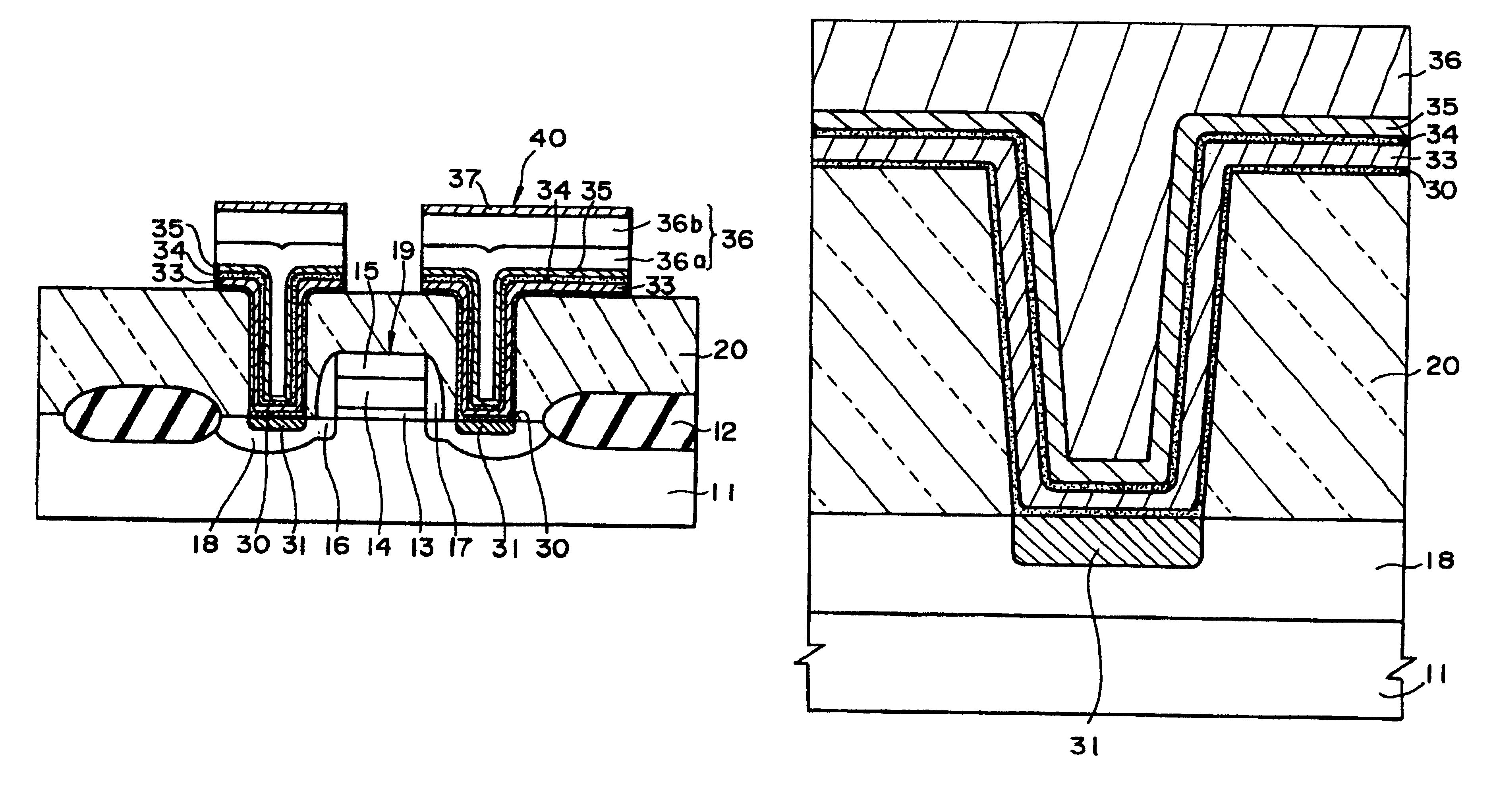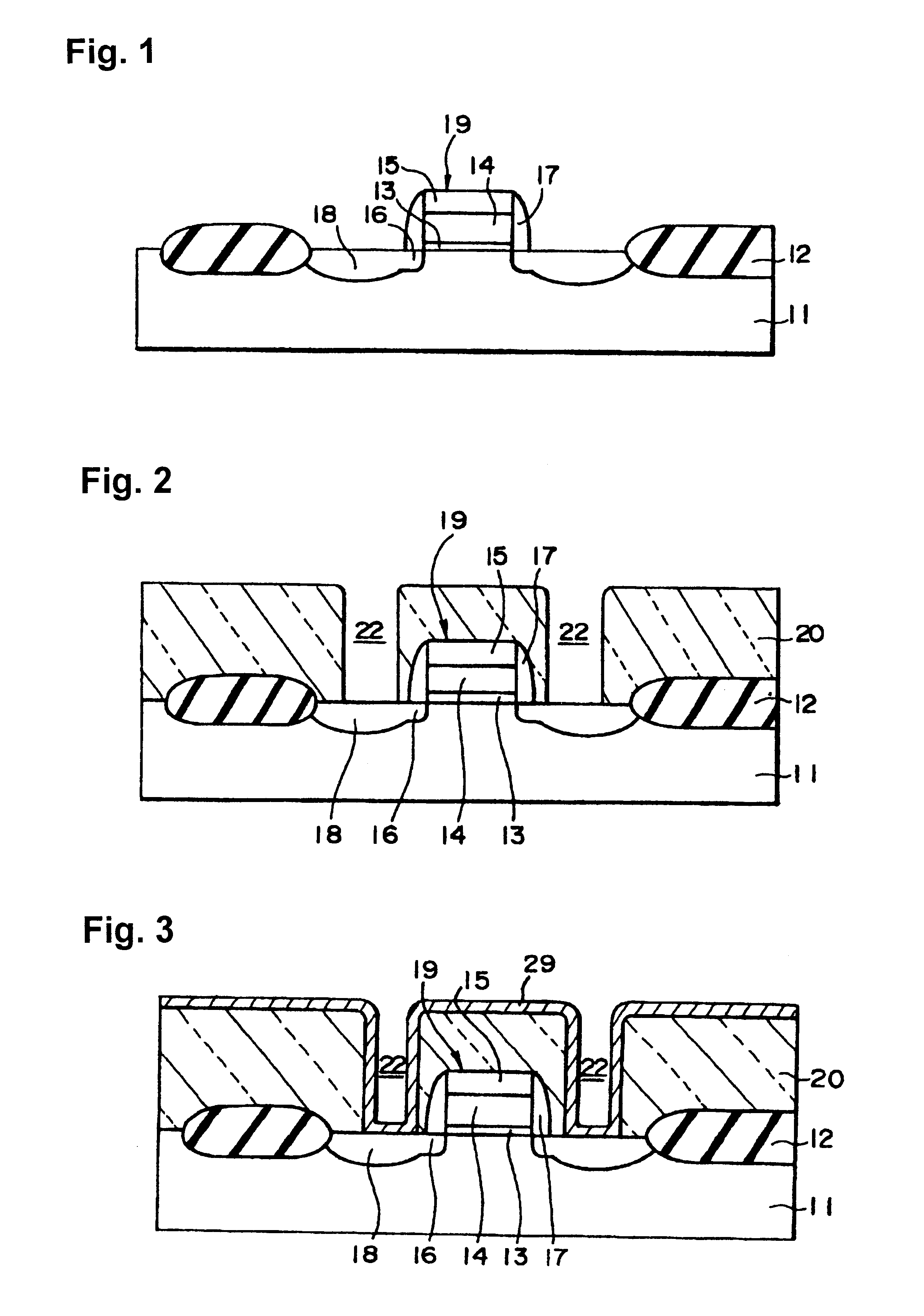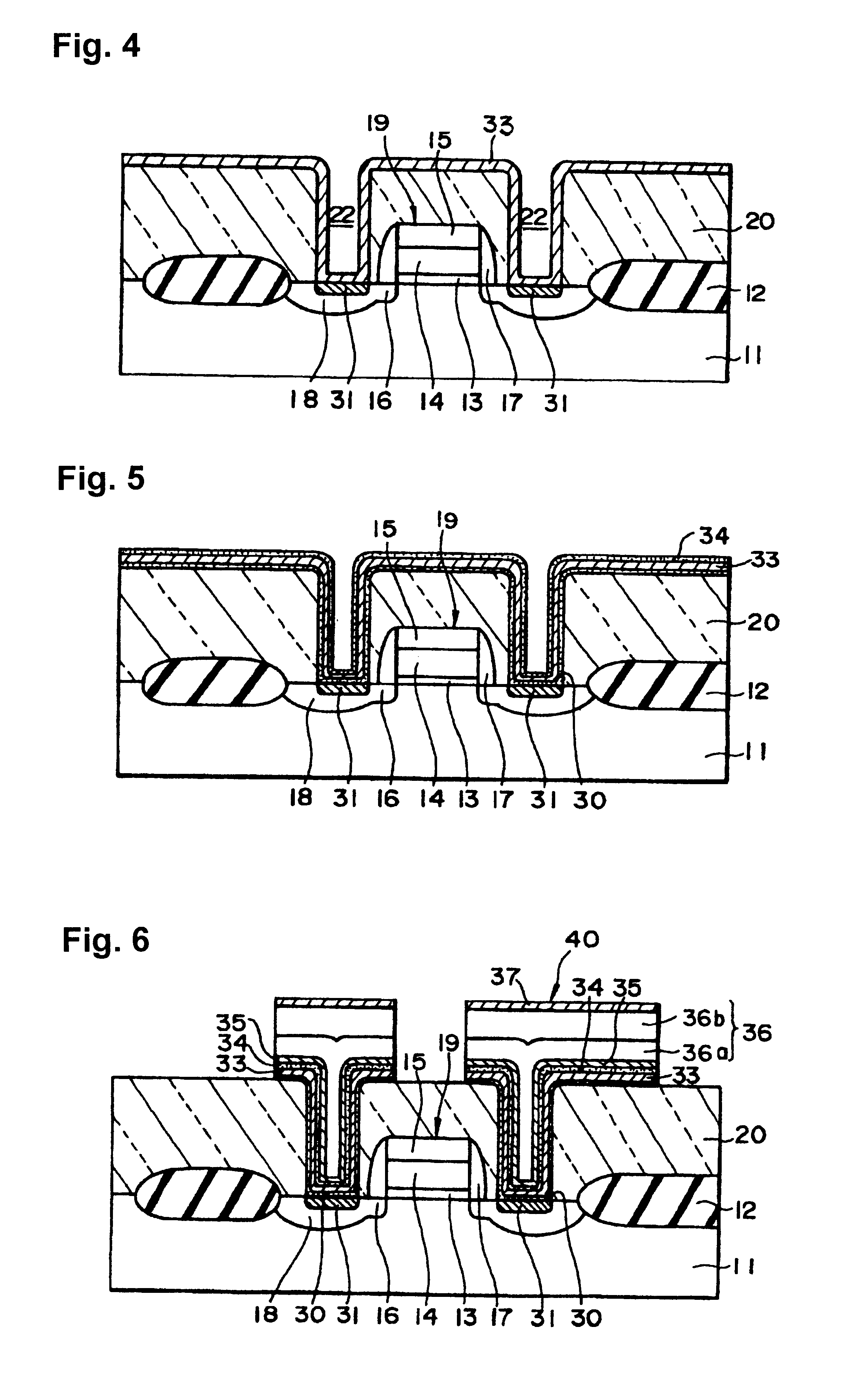Method for manufacturing semiconductor devices
a manufacturing method and semiconductor technology, applied in semiconductor devices, semiconductor/solid-state device details, electrical devices, etc., can solve the problems of reducing production yield, deteriorating resistance to electromigration, and requiring a high barrier capability
- Summary
- Abstract
- Description
- Claims
- Application Information
AI Technical Summary
Benefits of technology
Problems solved by technology
Method used
Image
Examples
Embodiment Construction
Referring to FIGS. 1-6, a method of manufacturing a semiconductor device will be described. FIG. 7 schematically shows a cross-sectional view of a semiconductor device manufactured by a method in accordance with one embodiment of the present invention.
A MOS device is formed in a silicon substrate 11 by a commonly practiced method, as shown in FIG. 1. More specifically, for example, a field insulation layer 12 is formed on the silicon substrate 11 by selective oxidation, and a gate oxide layer 13 is formed in an active region. A threshold voltage level is adjusted by channel injection. Then a polysilicon layer 14 is grown on the gate oxide layer 13 by thermally decomposing monosilane (SiH.sub.4), and a tungsten silicide layer 15 is sputter-deposited on the polysilicon layer 14. Further, the layers are etched to a specified pattern to form a gate electrode 19.
Then, phosphorous is ion-implanted to form a low concentration impurity layer 16 for a source region or a drain region. Side-wa...
PUM
 Login to View More
Login to View More Abstract
Description
Claims
Application Information
 Login to View More
Login to View More - R&D
- Intellectual Property
- Life Sciences
- Materials
- Tech Scout
- Unparalleled Data Quality
- Higher Quality Content
- 60% Fewer Hallucinations
Browse by: Latest US Patents, China's latest patents, Technical Efficacy Thesaurus, Application Domain, Technology Topic, Popular Technical Reports.
© 2025 PatSnap. All rights reserved.Legal|Privacy policy|Modern Slavery Act Transparency Statement|Sitemap|About US| Contact US: help@patsnap.com



